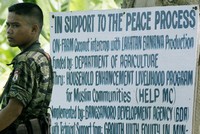Over the past few decades, the shifting dynamics of the nature of war, combined with a maturing field of peace process support, have led to parallel shifts in the nature of mediation in peace processes. There has been a significant increase in the number of ongoing civil wars, as opposed to interstate wars, and the field of conflict transformation has changed accordingly. Under the leadership of Kofi Annan, the United Nations began the process of mainstreaming the inclusion of civil society and other actors into the fields of peacebuilding and conflict resolution. Now, more actors, using more-advanced support mechanisms, are engaging in peace-process support. This maturing of the field has also helped facilitate innovative approaches to overcoming the challenges of contemporary peace talks in a civil war setting. This article will reflect on some of the changes in practice in relation to the peace process currently underway in the Philippines.
Traditional diplomatic mediation occurs between two states with a third-party “big man” mediator, normally a state or an international organization. The process is usually based upon the assumption that those involved in the conflict operate according to defined hierarchies of power, and thus that the way to manage the conflict is to identify and work with the relevant power-holding authorities within those hierarchies. Another key feature of traditional mediation practice is that the conflict is perceived as a breakdown in the predominantly pacific political relations of states. Viewing conflict in this way, traditional mediation practice approaches the conflict through deployment of a mediator who aims to bring conflicting parties to a compromise that would restore the status quo before the conflict, thereby restoring the relationship to its "normal" state of affairs. This has led to mediation being limited to a select group of state actors engaging in a process where discussions and outcomes are circumscribed.
In intrastate conflict mediation, we must move past the narrow traditional approach. There is a need for mediation efforts to refocus on the challenges unique to specific conflicts and to incorporate a wider array of actors that strive to address the deeper, root causes of the conflicts, rather than return to the status quo ante. In other words, mediation in the internal conflicts we see today requires a more extensive effort that mirrors the more far-reaching causes and effects of these conflicts.

